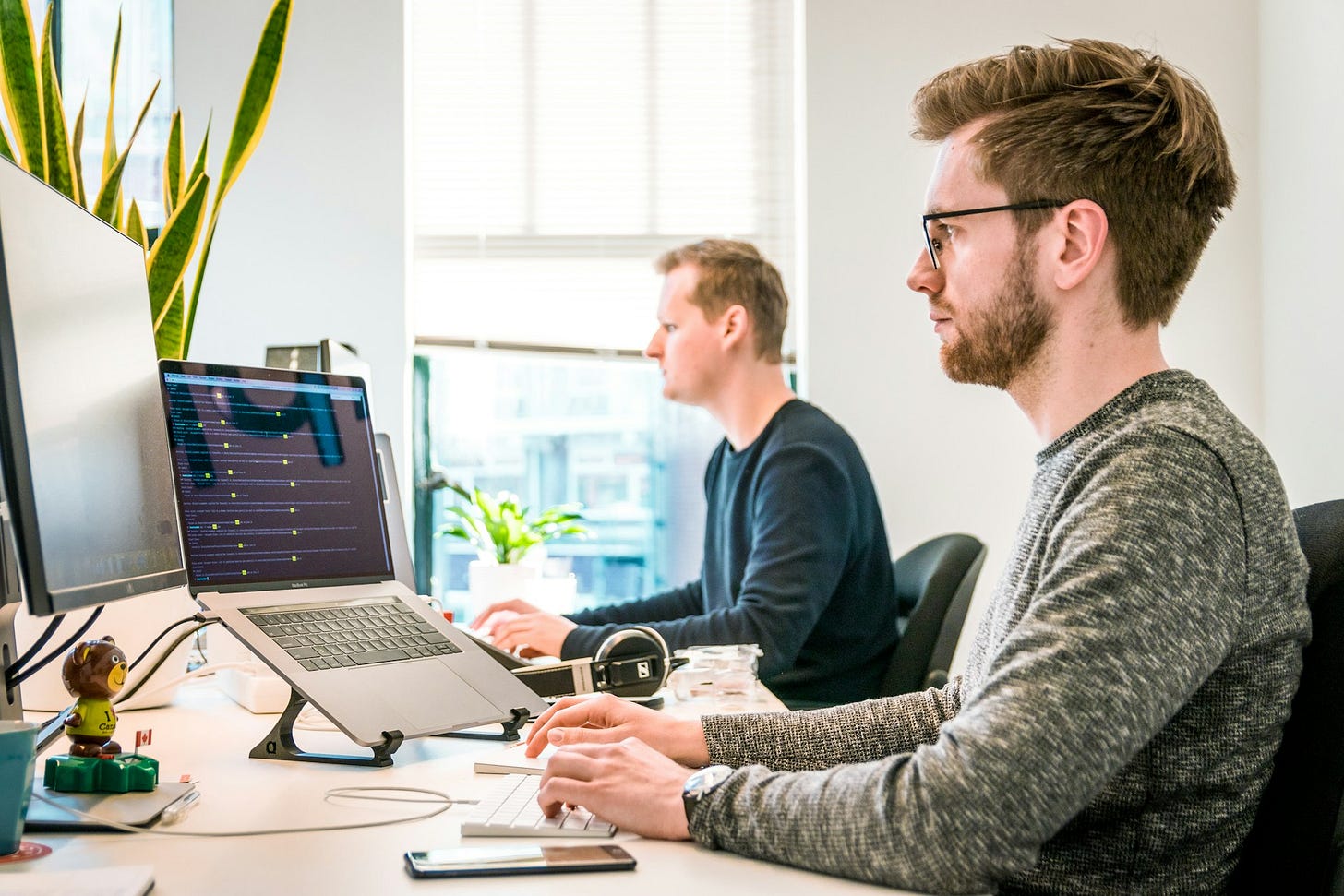You can’t optimize what you won’t protect
Stop managing your time and start defending your focus
What if your productivity system is the thing killing your productivity?
You’ve got the tools. The calendar blocks. The perfect Notion setup. But somehow, you’re still drowning in busy work while your most important projects gather dust.
This week, I’m showing you how to eliminate the friction, reclaim your focus, and build a personal productivity system that actually works.
Today’s agenda:
📉 Why your team is drowning in gray work—and you’re creating it
⚙️ How to build a personal productivity system that works
🎧 Why “study with me” videos hack your focus
💼 Briefly: AI automation, meeting fatigue, and the distraction crisis
⏱️ Up & coming: 79% of workers can’t focus for 30 minutes
📉 Why your best people are drowning in gray work
Your team isn’t unproductive. They’re just spending 20 hours per week chasing information across different systems instead of doing actual work.
Research from Quickbase found that 70% of employees spend upwards of 20 hours per week—half their work time—navigating tools and hunting for information. That’s not a training problem. That’s a structural problem you created.
The tension between organizational productivity and individual productivity isn’t just friction. It’s a fundamental conflict costing the global economy $450 billion annually in lost productivity from context switching alone.
📌 Here’s what’s killing output:
Context switching reduces productivity by 40%, and it takes 23+ minutes to refocus after each interruption
The average digital worker toggles between applications nearly 1,200 times per day
Organizations spend 33 hours per month reconciling reports from fragmented systems
The fix? Ruthlessly consolidate your toolbox. Protect focus time systematically. And measure gray work as seriously as you measure revenue—because it’s the hidden tax on everything you’re trying to accomplish.
📄 Read “The Productivity Trap: How Organizations Sabotage Their Own Teams”
⚙️ The personal productivity system that actually works
Most productivity advice focuses on tools and techniques. But the real breakthrough? Building a personal system that matches how you actually work—not how productivity gurus say you should work.
Jeff Su taught this exact framework to over 6,600 Google employees. It’s platform-agnostic, handles every type of information you encounter (tasks, ideas, notes, files), and it’s built around one truth: you don’t rise to the level of your goals, you fall to the level of your systems.
The system is called CORE, and it beats willpower every time.
🎯 The 4-step CORE workflow:
Capture - Immediately offload tasks, ideas, and files onto an external system. Your brain is for generating ideas, not storing them
Organize - Use minimal friction to sort and label at the point of capture (deadlines, tags, categories)
Review - Schedule three small review sessions daily to process your information inbox and make decisions
Engage - Block calendar time to actually do the work. This turns reminders into real progress
Here’s the trap though: productive procrastination. You spend hours perfecting your Notion setup, color-coding your calendar, researching productivity methods—while your most important project sits untouched.
The tool doesn’t matter. Notion, Apple Notes, Google Keep—pick whatever works and stick with it for two weeks. Consistency beats optimization. Systems beat motivation.
Short-term discomfort from adopting a system is always less than the long-term stress of missed deadlines and forgotten tasks.
🎧 Why “study with me” videos hack your focus
Those “study with me” and “work with me” videos aren’t just background noise—they’re engineering the conditions for deep work.
Remote workers save 72 minutes daily from not commuting, but many struggle with isolation. These videos recreate the “coffee shop effect”—the ambient presence of others working that helps you stay accountable without the interruption.
Why they work:
Body doubling - Visual presence of someone else working creates accountability
Structured time blocks - Built-in Pomodoro timing gives you natural break points
Social working without social interruption - 70% of employees cite colleague interruptions as their top distraction. This gives you presence without disruption
It’s not about the video. It’s about recreating the office vibe while protecting your focus.
🎬 Here’s the “office working feel” video I’ve been using this week
💼 Briefly
Productivity gains, workplace chaos, and the focus crisis
📊 Automation saves an average of 3.6 hours per worker weekly, and 36% of workers say it gives them better work/life balance. The productivity gains are real—if you automate the right things. Read the automation report here.
⚠️ Workers spend 127 hours a year regaining focus after distractions. Add another 75 hours on unproductive emails and 78 hours on inefficient meetings. Your calendar is eating your productivity. See the Economist Impact findings.
🤖 McKinsey found that AI could automate up to 3 hours of daily activities by 2030. The question isn’t if AI will change knowledge work, but whether you’ll be ready when it does. Explore McKinsey’s AI workplace research.
🔄 84% of workers say they’re more productive in hybrid or remote environments, especially younger employees. But fully remote workers are 1.3 times more likely to feel job insecurity. The productivity is there, but so is the anxiety. Check the latest remote work data.
⏱️ Up & coming
The focus crisis: 79% of workers can’t concentrate for 30 minutes
According to the 2025 Time-Wasting Report, 79% of US workers get distracted within an hour, and nearly 59% can’t focus for even 30 minutes without getting sidetracked.
Think about that. Three out of five knowledge workers can’t hold focus for half an hour.
Research shows it takes 23 minutes on average to regain full focus after each interruption, reducing overall productivity by up to 40%. With 92% of employers seeing lost focus as a major organizational problem, this isn’t just an individual issue—it’s an economic crisis.
Deep work can make you up to 500% more productive, but the modern workplace makes it nearly impossible to achieve.
The solution isn’t more willpower. It’s redesigning work to protect focus as fiercely as you protect revenue.
Read the full Time-Wasting Report →
Stay focused, stay productive, keep building.


